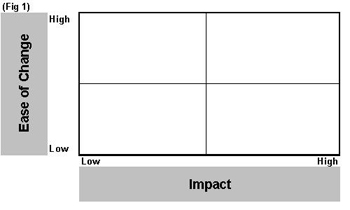Lean Business: You Can't Delegate Leadership
Add bookmarkLean improvements may require changing systems, organizational structures, processes, acquiring new technologies/machines, or even altering layout of the workplace. And although all of these components are important, says Piyush Banafar, the most important area of focus for Lean leaders are the people.
Implementing Lean is a journey and has a huge impact on employees because Lean changes the way that everyone operates.
In this article, instead of focusing on the tools like value stream mapping, value added activities, poka yoke, kaizens etc., I wanted to focus on one of the key imperatives of lean - "change" - and particularly the "people" part of it. Among all the different pieces of the puzzle - processes, machines, workplace layout, systems - it’s "people" that make it happen.
Developing the Strategy/Vision – The Importance of Top Down
Since Lean impacts a business as a whole, it is critical that the vision and strategy has complete buy in and participation of top leadership. This is something that cannot be delegated and the direct involvement and participation of leadership teams is a must. The first line of leaders must communicate key messages to prepare the teams at the onset, during and after the lean events and reinforce their commitment to change throughout the process.
The biggest advantage of top down communication is that employees begin to understand that doing things the old way is not going to keep the business competitive forever and hence they must get on board.
When employees start to see the improvements in their own work areas and start getting recognition of work that resulted in saving money generating huge returns, even the initial detractors join the initiative. That’s when you will know that you are on track to success. Participation of employees at all levels is needed to not only implement the change but to make the change last.
Must haves for the initiative/project
Once we have the business/functional leaders commitment, we have reviewed areas of improvements, we have done multiple lean workouts, we will have further developed a stack of improvement ideas that different functions/teams are going to implement. The next step is to prioritize these ideas to continue the Lean journey. One may put these ideas on the board and rank them before implementing them. A 2X2 matrix of "Ease of Change" vs. "Impact" is a good tool for the same (see table 1).
FIGURE 1: The key- "Ease of Change" has a "people" part to it.
Improvements may require changing systems, organizational structure, changing processes, bringing in new technologies/machines, changing layout of the workplace etc, but the key to success here are the "employees", they are the experts, they are the originators of the improvement deck and they are the ones who will implement the change, run the machines, change the processes and also monitor/take corrective actions.
Note that the intellectual capital that the company has developed over years has tremendous value- in terms of both cost and time. After all, the business has put in many years training and developing them and spent hundreds and thousands of dollars in the process.
[eventPDF]
While changing machines, changing work place layouts, updating policies and procedures has a cost, bringing change in people is not easy as it is a factor of their openness to change. The intent of this article is not to go into the details on what needs to be done here but to flag this as a key factor in the success of this journey.
The important point is that when we have spent so much time and money over the years developing our employees, I would focus first on their participation and engagement to bring about the desired changes, which in turn defines success or failure.
Conclusion
The difference between a good lean practitioner and a great one is just as above: watch your most important asset (employees), "hear" what they are saying, "hear the unheard", get their buy-in and once the in-house experts are on board, it will be a smooth sailing.
Great business leaders understand the above and manage the same very well along with their focus on making their business competitive. Implementing Lean, benefiting the shareholders and walking away with the human capital delivering more is a win-win solution.
Disclaimer:The ideas/opinion above are the author’s personal opinion and in no way suggest they are the company’s views he works for.





















